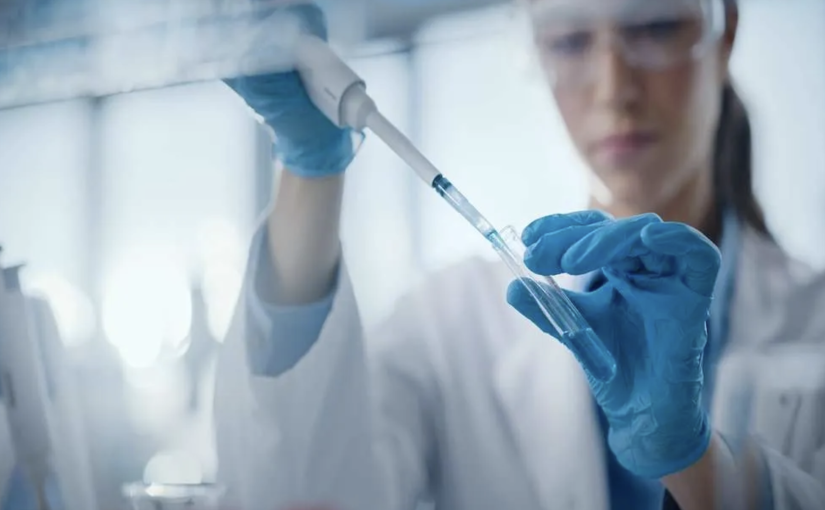If you asked 100 people what the origin of dozens of widely prescribed and lifesaving drugs is, it’s a sure bet few of them could get the answer right: It’s Chinese hamster ovaries (aka CHO). That fuzzy rodent so popular in grade school classrooms? Its cell line development is a foundational tool of the biopharmaceutical industry.
CHO cell lines are mammalian cells originally derived from the ovary of the Chinese hamster and replicable, in vitro (outside of the organism), in lab settings. There are several cell lines dating back decades that are modified and replicated for drug development and research. They’re commonly used in biotechnology for the production of therapeutic proteins and biologic drugs due to their ability to perform complex modifications of proteins.
What Is Cell Line Development?
At its core, cell line development is about creating a microscopic factory. Scientists select a specific type of cell — often mammalian cells like CHO cells, but sometimes microbial cells like E. coli — and then optimize its environment to turn it into a high-yield, stable producer of a target molecule. These molecules are often proteins, which can serve as the active ingredients in biologic drugs, the fastest-growing segment of the pharmaceutical market.
The work of progressing from a single cell to a stable cell line is meticulous. It starts with isolating a specific cell type and subjecting it to various selection pressures, such as antibiotics or particular nutrients. The aim is to ensure that the cell line remains genetically consistent, producing the target molecule reliably and efficiently while maintaining high purity levels. Once a stable line is established, scientists fine-tune the growth media and environmental conditions to maximize yield. This is followed by rigorous testing to ensure the cell line’s stability, productivity, and absence of contamination.
How CDMOs Use Cell Lines
Contract development and manufacturing organizations and pharmaceutical companies are the primary users of cell lines, applying them for both research and development purposes.
In the early stages of drug discovery, cell lines can serve as invaluable in vitro models, offering a controlled, alterable environment where scientists can test the efficacy and toxicity of potential drug candidates at the cellular level.
CDMOs take the lead in developing high-yield, stable cell lines to produce therapeutic proteins. These proteins can range from therapeutic monoclonal antibodies to enzymes and hormones. Cell lines are pivotal in the production of viral vectors and antigens, the building blocks of many vaccines.
Emerging trends in personalized medicine are benefiting from advancements in cell line development, particularly in creating patient-specific cell lines for drug testing of uniquely targeted treatments.
Samsung Biologics’S-CHOice®: A Case Study
Samsung Biologics is one of the world’s largest CDMOs, and it utilizes a proprietary CHO cell line development platform when it partners with pharmaceutical companies in the drug development process. The platform,S-CHOice®, is designed to offer high-titer production.
A high-titer cell line is capable of producing a large amount of the desired product, such as a specific protein or monoclonal antibody, per unit of culture volume. It’s like having a factory that’s exceptionally good at churning out a high number of quality products in a given space and time.
“S-CHOice® is our high-performing, proprietary cell line development platform which uses CHO-K1 cells and a [glutamine synthase] knock-out system,” says Daniel Buckley, a lead scientist at Samsung Biologics. “This development platform incorporates the latest technology, including the beacon system, to ensure the highest accuracy and accelerated timelines.”
High-titer cell lines are highly sought after in biomanufacturing because they can significantly improve the efficiency, commerciality, and cost-effectiveness of producing biologic drugs, vaccines, or other therapeutics.
A recent example is Samsung Biologics’ partnership with Aronora, an Oregon-based pharma company that’s undergoing clinical development for Gruticibart, a recombinant monoclonal antibody designed to treat and prevent blood clots (thrombosis) while minimizing bleeding risk.
Samsung Biologics’ primary experience is in monoclonal antibody development and manufacturing, which was a key deciding factor for Aronora’s decision to work with the CDMO. But another crucial decision point was the high-titer S-CHOice® cell line.
“It’s extremely important to the viability of the program to be able to generate a sufficient amount of antibodies for a certain amount of money,” said Christina Lorentz, director of clinical operations at Aronora, in a recent article describing the partnership. “If your titer is low, you have to run these giant bioreactors — which is expensive — just to get a small amount of antibodies.
“If cell line development fails, then the whole program has a risk of failing. So knowing our new cell line has a high titer means the program has regained significant momentum.”
This partnership, which moved from cell line development to commercialization, is simply one of a continuously increasing number of drug development projects that ultimately rely on cell lines — like the ones in Chinese hamsters.
